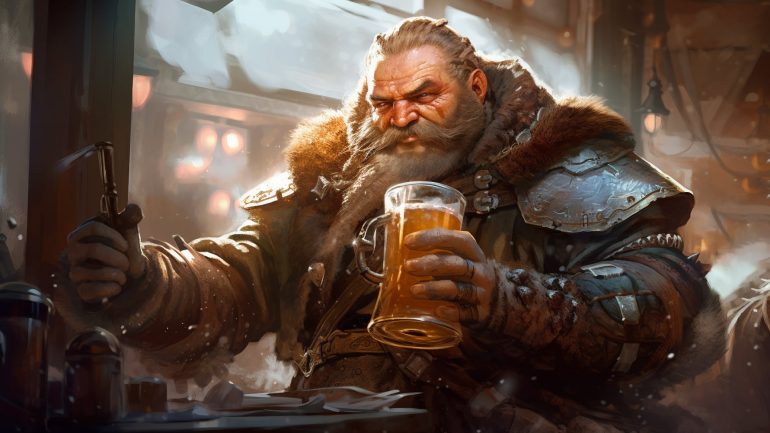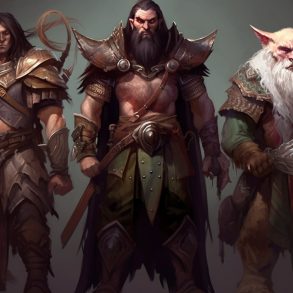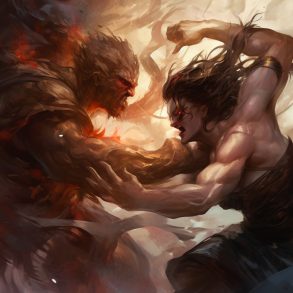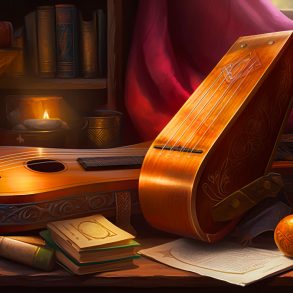We’ve all been there, waiting for a DM or Players so we can finally start a DnD campaign. It’s exciting waiting to begin, but it can also be disappointing when that never comes. I, however, have some tips and tricks for either case you can use to get your campaign rolling. These tricks probably won’t work for everyone, and some may work better than others depending on your circumstances, but they should at least give you advantage. If you’re unsure how to write a campaign, try this list of free campaign PDFs or this guide on how to write a DnD Campaign. Now, strap in, and get ready to roll.
For these first tips, I will be assuming you don’t have a group yet. The first one is simple: ask friends or family members if they would be interested in playing or learning DnD. You never know if you know anyone who has played before or wants to. You might even find a DM!
However, your friends and family aren’t always ready to play DnD, or are done with some of the antics that typically ensue. So the next tip is to look for a game shop and ask one of the employees if there are any DnD groups or players that stop by, and if they’re looking for players (remember to check the edition first). A good bet when looking for a game shop like this, is looking for some kind of table with chairs, or better yet: a couch nearby as that typically is used for game groups. Just remember you may have to actually go out and explore for a game shop if you can’t find one online. Make sure to check places where shops are tightly packed, game shops can hide in there really easily.
If you don’t want to worry about things like Covid-19 interrupting your campaign, or you just don’t like driving (I don’t blame you if that’s the case, I don’t like it myself), you can use social media in order to find groups that either want more players or players looking for a DM.
Now if you do have a group, you may find scheduling to be an issue, or just finding a place for everyone to meet up. These next tips are for actually getting the game started, and if you don’t have a campaign idea by now, work with your group to see what kind of campaign everyone wants to have, and build from there.
For scheduling issues, start by listing what days everybody has completely free. Then you can see what works and what doesn’t, and tweak until you have enough people able to make it for the campaign.
Struggling with a meet-up location? You can try someone’s house, a game shop, or if you all have internet access–you can use a Virtual Tabletop (VTT) such as Roll20 (I am biased towards this one, but it is free if you want to try it), Tabletop Simulator, or perhaps any kind of meeting application like Zoom or Discord for theatre of the mind (TotM) gameplay. There’s even the Avrae bot for Discord, and DNDBeyond integration for character sheets, or if you are really daring and knowledgeable, you could absolutely make your own application for playing DnD. But, it’s a good idea to give yourself time to do that.
Once you have all the arrangements sorted, and you’re ready to start… You need to host Session 0. Of course you could get away without it, but it can really improve your campaign to have one. For anyone who doesn’t know what a Session 0 is, that’s your planning session, where you: bring up any homebrew rules you want to use, build characters, establish boundaries, manage expectations, and generally set the tone for the campaign. A good way of preparing for a Session 0 is to have your players fill out surveys to save time. Sites like Survey Maker or Google Forms make this convenient, but just a typed up message also works nicely. It’s not that easy if it’s your first time running a campaign (and if it is your first time, might I suggest a one-shot to start with, it can evolve into a full campaign if your players like it). But if you plan properly, you can really run a campaign to remember, and even turn lives around!
The last tip for this article is: Build for your characters. As tempting as it is to throw them against dragon after dragon, dungeon after dungeon, if they don’t get to use their niche abilities, it can feel a bit bad (e.g. Fjord’s ring of Fire Resistance in Critical Role Campaign 2) when it doesn’t get much use. Just make sure that you focus on as many players as possible, such as emphasizing a Wizard’s Feather Fall spell, then a Monk’s Deflect Missiles, and then a Barbarian’s Rage. This can really make each player feel awesome, encourage talking to each other positively, and bring the game closer together. If they don’t know how to use their abilities, base a puzzle around them, requiring them to use 2-4 class specific abilities before they can beat it. This will be a huge moment of discovery for them, and if what they want to do is outrageous but creative, remember to say “no, but!”, you don’t want to shut down players completely. If you find everybody is tired of the same old thing, you should talk to them away from the table about it, if you do this, your games will feel so much better.
As much as I could go on and on and on about keeping your players at the table for the entire campaign, that’s a topic for another article. Keep in mind, anyone who plays DnD is playing to have fun, and each person enjoys different aspects of the game! Have fun, and keep those campaigns running strong!






